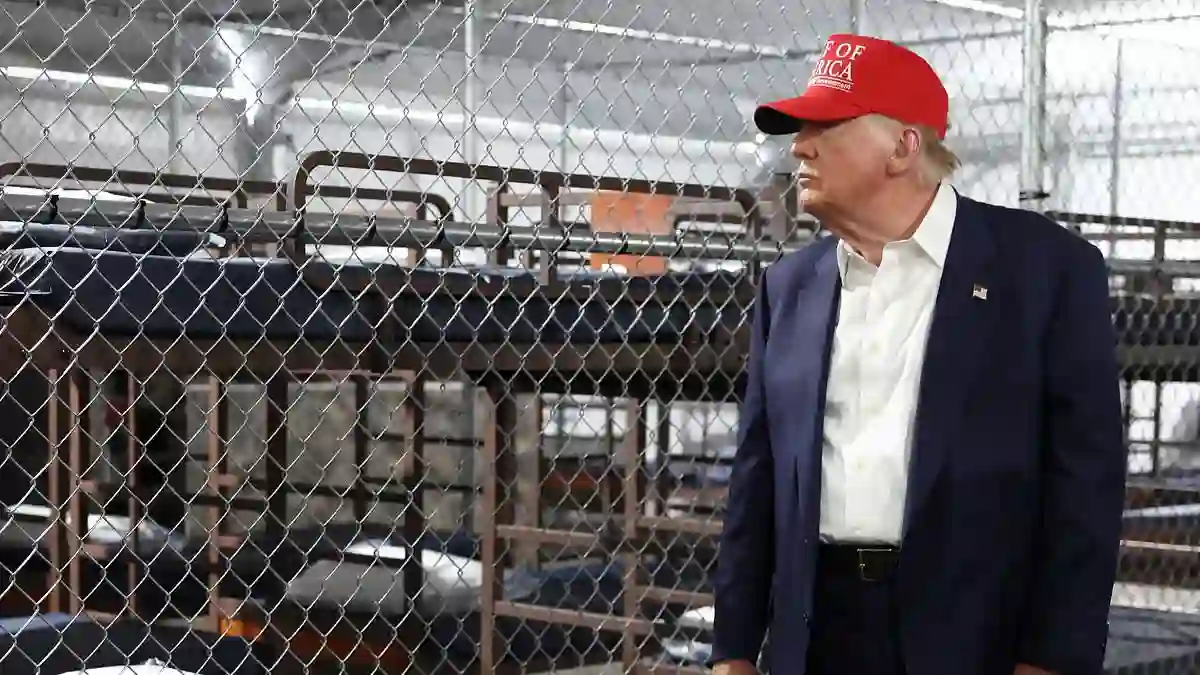It was supposed to be the ultimate deterrent—an immigration detention center so isolated, so intimidating, that just hearing about it would be enough to make people think twice.
Tucked deep in the wild swamplands of the Florida Everglades, and nicknamed “Alligator Alcatraz,” this facility was built to make a point.
But just days after it opened, disturbing reports from the inside have shifted the spotlight.
What’s being described now isn’t a model of tough security—it’s a humanitarian disaster.
Detainees Speak Out About the Nightmarish Conditions
Since July 3, the first wave of around 400 detainees has arrived, and their accounts paint a harrowing picture.
Cuban musician Leamsy Isquierdo, one of the detainees, shared with CBS News that many are surviving on a single meal a day—often spoiled and infested with maggots.
“I haven’t bathed in four days,” he said. “There’s no water.
The lights stay on all day and night. And the mosquitoes? They’re the size of elephants.”
Other detainees described insects crawling over everything and compared their living situation to being trapped in an experiment.
Grasshoppers “the size of a hand,” tents flooded with bugs, and constant bites from massive mosquitos have become the new normal.
Lawmakers Raise Red Flags After Being Denied Entry
Florida state representative Anna Eskamani says her office has been flooded with disturbing complaints—from lack of water to detainees being forced to use toilet water for bathing.
She and three other lawmakers attempted to visit the site but were turned away.
Still, she got a firsthand sense of the environment.
“This is a swamp,” she said bluntly. “It was never designed for people to live or work here.
The mosquito situation is completely out of control.”
Medical Experts Warn of Dangerous Health Risks
Mosquitoes in the Everglades aren’t just a nuisance—they’re potentially deadly.
According to epidemiologist Dr. Durland Fish, who has spent years studying the region, the bugs in this part of Florida are known to carry serious diseases like St. Louis encephalitis, West Nile virus, and the Everglades virus.
Fish warned that putting large groups of people in this area without proper mosquito control is “very risky,” especially during Florida’s brutal summer.
“You could get bitten 50 times in a minute,” he said.
“It’s completely inhabitable without major mosquito management, and even then, it’s a big gamble.”
Environmental Concerns Echo Alongside Humanitarian Ones
Addressing the mosquito problem isn’t simple either.
Fish noted that to get it under control, officials would need to use massive amounts of insecticide—something that could severely impact the Everglades’ fragile ecosystem.
“This area is a national treasure,” he added. “It’s protected land.
Building a facility like this in the heart of the Everglades is unprecedented.”
Environmentalists are also worried about the impact on native wildlife, including the same alligators that state officials proudly pointed to as a built-in security feature.
Dangerous Weather and Questionable Safety Standards
It’s not just the bugs and isolation causing alarm.
Experts are concerned the center, which was built in just eight days, may not be safe for Florida’s extreme weather.
The site already saw flooding after recent rains, just as former President Donald Trump toured the facility for its grand opening.
Critics say the structure doesn’t meet hurricane standards for a region known to be hit hard by major storms.
Florida emergency officials say the buildings can withstand winds up to 110 mph.
But that’s well below the 180 mph gusts that tore through the area last year during Hurricane Milton.
According to architecture professor Anthony Abbate, the design standards cited by officials haven’t been considered acceptable since Hurricane Andrew in the early ’90s.
Officials Defend the Facility Amid Worsening Backlash
Florida Governor Ron DeSantis and others stand by the center’s design and purpose.
They’ve described its location—50 miles west of Miami—as a strategic choice to discourage illegal immigration.
The proximity to alligator-filled swamps was a deliberate feature, echoing the isolation of San Francisco’s infamous Alcatraz prison.
The state’s Division of Emergency Management insists reports of mistreatment are inaccurate.
In a statement to the Daily Mail, officials said detainees have access to potable water via regularly sanitized tanks, full showers, working air conditioning, and three meals per day.
DHS also fired back at critics, accusing the media of pushing a misleading narrative.
“ICE has higher detention standards than most U.S. prisons,” the agency posted on X (formerly Twitter), saying detainees receive proper medical care, food, and communication access.
The Battle Between Image and Reality Continues
Despite official denials, the tension is growing.
As lawmakers, scientists, human rights advocates, and environmentalists raise the alarm, the controversy over “Alligator Alcatraz” is far from over.
What was meant to be a bold, unmistakable warning is quickly becoming a symbol of chaos—where policy, nature, and human rights are colliding in one of the most inhospitable places imaginable.
